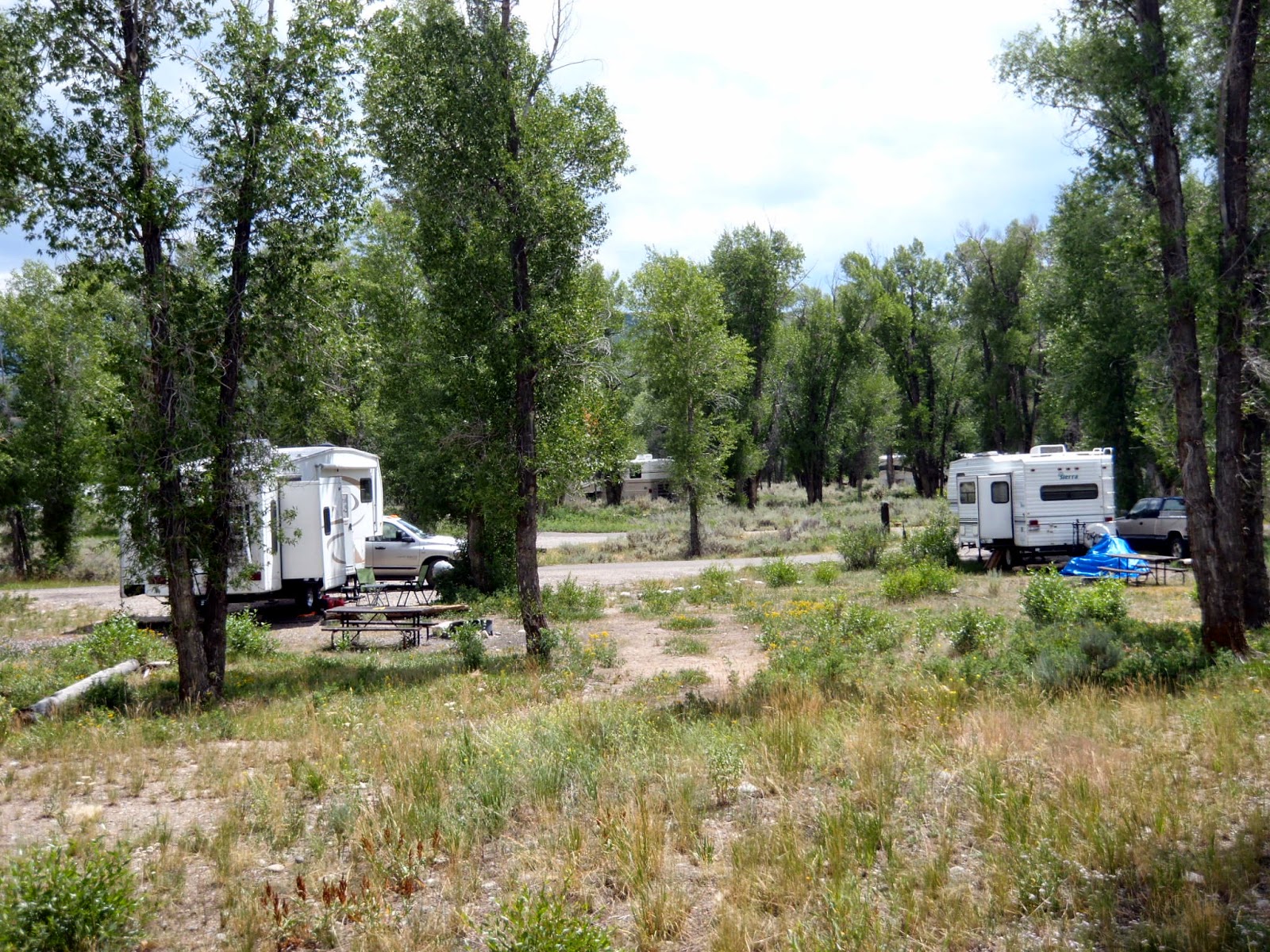Our route from Woodland Park, Colorado to GTNP took us through the central part of Wyoming, traveling from southeast (Cheyenne) to the northwest (Jackson Hole). I’ve often heard that this part of the country is sparely inhabited, but until you drive through it is hard to appreciate what that means. From Cheyenne we traveled interstate 80 until we reached Rawlins. The most striking part of this drive for me was the absence of trees.
 |
| Wide open spaces in Central Wyoming |
For as far as I could see in the rolling hill terrain, there was not even a shrub in site. Then when we turned off the interstate at Rawlins and headed north, we not only saw no trees, but we seldom saw another vehicle. This is truly a vast empty area. I found it to be beautiful in its contract to the mountains we have been traveling through for the past few months.
When we arrived in GTNP, we headed to the largest campground in the Park, which is Gros Ventre (pronounced "Grow Vaunt") Campground. The campground has 300 campsites and is about five miles from downtown Jackson Hole. As one should expect in this area in July, the campgrounds are heavily used. But Gros Ventre covers a lot of ground, so campsites are well spaced and we didn’t feel crowded at all.
 |
| Our campsite in Gros Ventre campground |
The location has been great for exploring GTNP, Jackson Hole and Yellowstone National Park, which is 55 miles to the north of our campground location. And the views for the Teton Range is spectacular.
 |
| Teton Range as seen from Kelly, Wyoming |
The Gros Ventre River borders the campground and is a tributary of the Snake River. There are lots of fishermen working the river, but I have seen no one catching fish. Once again, the price of non-resident fishing license ($92) is keeping my off the stream. I’ll be spending my license budget in Idaho and Montana. But there is still plenty to do here even without fishing.
We have taken several day trips around GTNP. In addition to the scenery, we have seen two moose, a large herd of antelope and a lot of bison. In most cases we find that when a wildlife sighting opportunity comes along we are sharing it with a crowded and generally don’t have a chance to park to get any pictures. The exception has been the bison, which are often close to our campground.
On Saturday, we took a drive up to Yellowstone. While the southern entrance to Yellowstone is only 55 miles from our campground, Yellowstone is HUGH! We drove the loop that covered the southern part of the park, which includes the Lewis River, Old Faithful, the Geyser Basin, Yellowstone River and Yellowstone Lake.
 |
| Geyser Basin |
 |
| Yellowstone Grizzly eating grass beside the road |
One of the things I found startling was the extent of the 1988 forest fires. Throughout our drive inside Yellowstone, we found that we were driving through land that has been burned over by the fire. New growth trees sprung up after the fire and are now 12-15 feet tall. Traveling alone the Lewis River we could see where the impact of the fire was still clearly visible.
The fire burned over 700,000 acres and I think we spent the whole day driving around it.
 |
| Lewis River valley still showing the impact of the 1988 fires. |
OK…so I started this post on Wednesday, July 30, but it seems I had used up my data plan for the month of July, so I was unable to complete it. We have now moved on to Idaho, staying on the Henry's Fork of the Snake River. We have no data coverage in our campground, so I have driven to town to get this posted. I'll get another done in the next few days and post it when we come to town again. Till then, we're chillin' in the mountains.



No comments:
Post a Comment